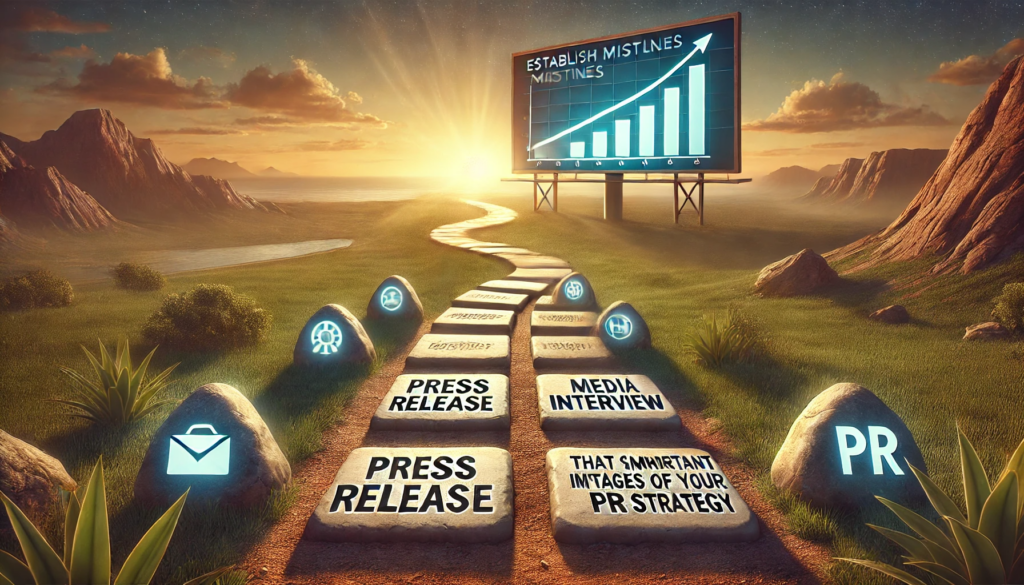Imagine your brand as a guiding light in a sea of information, leading your audience to a positive perception and lasting relationship. Crafting a stellar public relations (PR) strategy is like setting the stage for your brand’s success. It begins with clear objectives—enhancing your reputation, increasing awareness, or driving engagement. By defining these goals, you set the foundation for a powerful PR strategy.

Understanding your target audience is the next crucial step. Who are they, what do they care about, and how do they prefer to receive information? Crafting compelling, clear, and captivating messages that resonate with your audience is key. Whether through media relations, social media campaigns, or influencer partnerships, choosing effective communication tactics ensures your message reaches and impacts your audience.
A PR strategy goes beyond managing media relations—it’s about meeting your audience’s needs, building trust, and shaping how the world sees your company. Ready to dive deeper? Scroll down to uncover the secrets of designing, implementing, and refining a PR strategy that will make your brand truly shine.
Introduction to Public Relations Strategy
Diving into the heart of public relations, let’s first unravel what a PR strategy is and why its role is pivotal in shaping the way organizations communicate and interact with their key audiences. At its core, public relations strategies involve strategic planning designed to craft a positive public image and influence public perception.

An effective public relations strategy isn’t just about managing relationships with the media. It’s about understanding and meeting the needs of your key audiences, which could include customers, investors, and other stakeholders. This understanding guides the development of PR tactics that help organizations achieve their goals and objectives.
The importance of public relations can’t be overstated. It’s a fundamental component that shapes how an organization is perceived by its key audiences. It’s the vehicle that carries your messages to the world, helping to build brand awareness, manage reputation, and even navigate crises.
When you create a PR strategy, you’re setting the stage for successful PR. You’re defining your organization’s story and determining the best ways to tell it. Whether through media relations, social media, or community engagement, an effective PR strategy guides your efforts to foster positive relationships and shape public perception.
Key Elements of a Public Relations Strategy
When crafting your public relations strategy, three crucial elements come into play.
First, you need to grasp your objectives, understanding what you’re trying to achieve.
Then, it’s about pinpointing your target audiences and formulating the key messages you want to convey to them.
Understanding Your Objectives
To set the foundation for a successful public relations strategy, it’s essential to clearly define your specific objectives. These objectives could include boosting brand awareness, managing reputation, or increasing media coverage. Remember, public relations is important in shaping positive public perception and maintaining your public reputation. Therefore, your PR objectives should align with the overall goal of your public relations efforts.

When creating PR strategies, consider what successful public relations looks like for your organization. Is it about achieving a certain level of media coverage, or perhaps it’s about managing a crisis effectively? Identifying what success means to you is crucial for developing a strategy that works.
Identifying Target Audiences
Understanding your target audience is essential in shaping an effective public relations strategy. It’s a core step in identifying target audiences, which involves audience segmentation, stakeholder analysis, and tailored messaging.
Audience segmentation helps you identify groups based on their interests, behaviors, and needs. You’ll be able to craft personalized messages that resonate well, enhancing customer engagement. This understanding also improves your media relations approach, ensuring your stories reach the right people, at the right time, in the right way.

Stakeholder analysis, on the other hand, focuses on individuals or groups who can affect or be affected by your actions. It’s particularly crucial in investor relations and employee communication. Knowing your stakeholders allows you to address their concerns, align their interests with yours, and build solid relationships.
In essence, understanding your audience allows you to send tailored messages that resonate and inspire action. It’s not just about knowing who they are, but also why they interact with you. This understanding is the cornerstone of a well-executed public relations strategy and the key to effective message personalization.
Crafting Key Messages
Now that you’ve identified your target audiences, it’s time to craft key messages that will resonate with them and align with your objectives. These messages are the heart of your public relations strategy and should be compelling, relevant, and memorable.
Storytelling is a critical aspect of crafting these messages. By weaving a narrative, you can connect with your audience on a deeper level. This makes your messages more memorable and impactful, thereby helping to drive your objectives forward.
Your messages must also be clear and actionable. Unclear messages can lead to confusion and are unlikely to inspire action from your audience. On the other hand, clear messages articulate exactly what you want your audience to know, think, or do, making them more likely to respond positively.
In the following video, Keisha Brewer emphasizes that in strategic communications, how you convey your message is as important as the message itself. She illustrates this with two examples: first, her career journey as a communications specialist, where she successfully reached out to Google for a partnership, and second, a personal situation where she advised a friend on how to reconnect through direct messaging. In both cases, she highlights the importance of understanding your audience and their needs.
Brewer outlines her steps for strategic communication: identifying the goal, understanding the audience, and clearly communicating the value of the offer. She also addresses potential resistance to communication and explains how strategic communication can overcome these barriers. Finally, Brewer stresses the significance of aligning the goal of the conversation with the interests of the listener to ensure effective communication.
Developing Your PR Strategy
To create a solid PR strategy, start with thorough research and analysis.
You’ll need to set SMART (Specific, Measurable, Achievable, Relevant, Time-bound) goals that align with your overall objectives.
Then, carefully select the most effective channels and tactics to reach your target audience.
Research and Analysis
Before crafting your PR strategy, it’s crucial to dive deep into research and analysis, thoroughly examining the current market, competitive landscape, and media environment. Here’s a glimpse into how a comprehensive PR strategy for 2024 might look like, with a strong emphasis on data-driven decisions.
| Step | Task | Importance |
|---|---|---|
| 1 | Market Research | Understand your target audience, their preferences, and their current perception of your brand. |
| 2 | Competitive Landscape Analysis | Identify your competitors’ strengths and weaknesses to inform your own PR tactics. |
| 3 | Media Environment Study | Evaluate media platforms relevant to your audience and understand their dynamics. |
A strategic public relations approach involves integrating these insights into your PR tactics. For instance, if your market research reveals a growing trend among your audience, incorporate this into your PR strategy in 2024. If your competitive analysis shows a gap in your rivals’ approach, seize it as an opportunity. Simultaneously, being aware of the media environment will help you choose the best platforms to connect with your audience. Remember, each step you take towards creating a public relations strategy should be informed by thorough research and analysis.
Setting SMART Goals

After conducting thorough research and analysis, it’s time for you to set SMART goals that will guide your public relations efforts and measure success effectively. Setting SMART goals is a strategic PR approach that good public relations rely on. It involves creating a PR plan and strategy that’s Specific, Measurable, Achievable, Relevant, and Time-bound.
Being specific is crucial. This means clearly outlining what you want to achieve, such as improving brand visibility or managing a crisis effectively.
Your goals should be measurable, meaning you’ll need to identify key performance indicators (KPIs) to track progress. Make sure your objectives are achievable and relevant to your business and industry.
Lastly, set a timeframe for when these goals should be met.
PR agencies typically use this approach as it’s a proven method for developing effective public relations tactics. A comprehensive PR strategy is essential to ensure your PR efforts are well-directed and purposeful.
Choosing the Right Channels and Tactics
Having set your SMART goals, your next step in developing your PR strategy involves choosing the right channels and tactics. This is key to ensuring your message reaches your target audience effectively.

There are numerous PR tactics to consider. Media outreach can help you gain coverage in popular publications, potentially reaching a large audience. Social media engagement involves connecting with your audience on platforms like Twitter, Instagram, and Facebook, which can foster strong relationships and increase brand visibility. Hosting events can offer face-to-face engagement, while content marketing allows you to provide valuable information to your audience, establishing you as a thought leader.
When choosing channels, you should consider the preferences and habits of your target audience. Different marketing channels may be more effective for different demographics. For instance, younger audiences might be more engaged on social media, while an older audience may prefer traditional media outlets.
Implementing the Strategy
Now that you’ve crafted your PR strategy, it’s time to put it into action. This involves creating a timeline with clear milestones to track your progress.
You’ll also need to execute your PR campaigns effectively to reach your goals.
Creating a Timeline and Milestones
How do you effectively implement your PR strategy within a designated time frame? A well-crafted PR strategy helps you lay out a clear roadmap towards your desired public image. The best PR strategies involve creating a timeline with specific milestones.
With digital PR becoming more prevalent, it’s important to incorporate different types of PR channels in your timeline. These can range from social media to press releases and events. Your PR strategy helps you to navigate these channels effectively.

To create your PR timeline, first identify key activities that need to be executed. Then, determine a realistic time frame for each activity. Establish clear milestones that signify important stages of your PR strategy.
Executing PR Campaigns
Executing your PR campaign demands a strategic blend of media coordination, event organization, and savvy use of digital platforms to amplify your messages. A robust public relations strategy is paramount for successful PR campaigns.
To begin, you’ll need to master media coordination. This involves building strong relationships with journalists and influencers, ensuring your PR coverage is optimal and reaches your target audience effectively.
Next, organizing events becomes crucial. Whether it’s a product launch, press conference, or a charity fundraiser, each event should align with your overall PR strategy and goals. Remember, these events serve as opportunities to foster relationships, showcase your brand, and handle potential PR crises efficiently.
The role of digital platforms in executing PR campaigns can’t be overstated. From social media to blogs, these PR platforms allow you to reach a broader audience, engage with them interactively, and amplify your messages significantly. PR experts emphasize the importance of using these platforms judiciously to manage your brand’s reputation and handle PR crises proactively.
Measuring and Evaluating Success
In the realm of public relations strategy, it’s crucial to measure and evaluate your success.
You’ll need to start by establishing key performance indicators (KPIs), which serve as measurable values that demonstrate how effectively your company achieves its business objectives.
Then, it’s all about monitoring progress towards these KPIs and reporting on the outcomes to understand the success of your PR efforts.
Establishing Key Performance Indicators (KPIs)
When establishing KPIs for your PR strategy, it’s crucial to focus on metrics like media mentions, website traffic, social media engagement, and sentiment analysis. These KPIs serve as quantifiable benchmarks to measure the effectiveness of your PR efforts. They should align with your business goals, and aim to cultivate a positive public perception of your brand.

As a public relations manager, you should understand that a solid PR strategy isn’t just about using PR as a marketing strategy tool, but also as a means to build community relations. You must set clear, measurable, and relevant KPIs that reflect the objectives of your PR campaign. For instance, if your goal is to improve the public perception of your brand, your KPI could be the number of positive reviews or testimonials from customers.
The process of establishing KPIs involves determining what success looks like for your PR campaign, setting measurable goals, and continuously monitoring and adjusting your strategy based on these metrics.
Monitoring and Reporting
Monitoring and reporting on your PR efforts is like checking the pulse of your campaign, ensuring its health and guiding necessary changes. This ongoing monitoring is key to the success of your PR strategy. It provides your marketing team with valuable insights on how your PR content is being received in the eyes of the public. For instance, media monitoring tools can help you track mentions of your brand across various media outlets.
| Activity | Tool | Outcome |
|---|---|---|
| Brand Mentions | Media Monitoring | Gauge public sentiment |
| Social Engagement | Analytics Platforms | Measure engagement rates |
| Coverage Quality | PR Measurement Tools | Assess impact and reach |
| Website Traffic | SEO Tools | Track visitor behavior |
| Campaign Goals | KPI Tracking | Evaluate goal attainment |
This data guides your PR and marketing strategy, helping you understand what’s working and what needs tweaking. If a new PR strategy isn’t resonating as intended, you can adjust it to better influence public perception. So, use public relations not just as a tool for building a positive image, but also as a feedback mechanism to refine your PR approach and maximize your campaign’s success.
Adapting and Refining Your Strategy
Adapting and refining your strategy is a crucial part of the PR process. It’s about taking what you’ve learned from your results, staying agile, and responding quickly to changes.
This way, you’re always ready to make the most of every opportunity.
Learning from Results
You’ll find that analyzing the results of your PR activities is key to understanding what strategies succeeded and where improvements can be made. In the hectic world of PR, it’s common for strategies to catch a ‘PR fire’, a blaze of unexpected outcomes that needs immediate attention. Learning from these results is crucial.

After any PR fire, refining your strategy will help prevent similar situations. Working with top PR agencies can provide valuable insights into what works and what doesn’t. These public relations companies have the experience to guide you in adapting your strategy, a crucial step in ensuring the success of your overall marketing strategy.
Staying Agile and Responsive
Just as you learn from your PR results, staying nimble and responsive to changes in your strategy is equally important. As the market fluctuates and trends change, so should your approach. Your PR strategy isn’t set in stone. It’s a flexible roadmap that’s designed to adapt to the ever-changing business landscape.

Consider changes in your target audience’s interests and behaviors. They’re the ones you’re trying to engage, influence, and maintain relationships with, so their feedback is invaluable. Listen to them. They can tell you what’s working and what isn’t.
Moreover, keep an eye on market trends. They can offer insights on how to refine your strategy to stay relevant. For instance, if a new social media platform is gaining popularity among your audience, consider leveraging it in your PR strategy.
Being agile also means being prepared for potential crises. Effective PR strategies include crisis management plans that allow you to respond quickly and appropriately when issues arise.
Conclusion
So, you’ve got the lowdown on public relations strategies. It’s all about setting clear goals, knowing your audience, crafting your message, implementing, and refining.
But remember, it’s a dynamic process that requires constant tweaking. Don’t be afraid to adapt and evolve.
With a solid PR strategy, you’re not just surviving in the business world, you’re poised to thrive.
Now, go out there and shape public perception like a pro!


